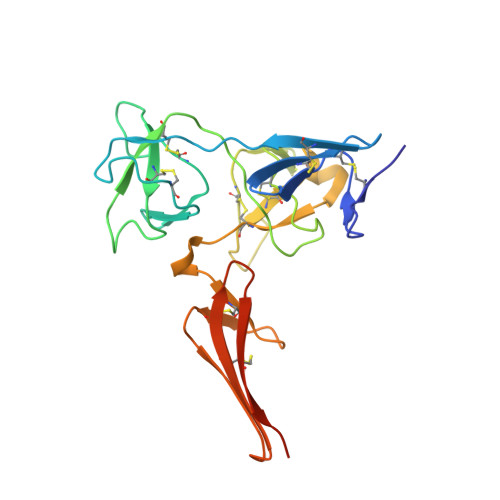Implications for collagen binding from the crystallographic structure of fibronectin 6FnI1-2FnII7FnI
Erat, M.C., Schwarz-Linek, U., Pickford, A.R., Farndale, R.W., Campbell, I.D., Vakonakis, I.(2010) J Biol Chem 285: 33764-33770
- PubMed: 20739283
- DOI: https://doi.org/10.1074/jbc.M110.139394
- Primary Citation of Related Structures:
3MQL - PubMed Abstract:
Collagen and fibronectin (FN) are two abundant and essential components of the vertebrate extracellular matrix; they interact directly with cellular receptors and affect cell adhesion and migration. Past studies identified a FN fragment comprising six modules, (6)FnI(1-2)FnII(7-9)FnI, and termed the gelatin binding domain (GBD) as responsible for collagen interaction. Recently, we showed that the GBD binds tightly to a specific site within type I collagen and determined the structure of domains (8-9)FnI in complex with a peptide from that site. Here, we present the crystallographic structure of domains (6)FnI(1-2)FnII(7)FnI, which form a compact, globular unit through interdomain interactions. Analysis of NMR titrations with single-stranded collagen peptides reveals a dominant collagen interaction surface on domains (2)FnII and (7)FnI; a similar surface appears involved in interactions with triple-helical peptides. Models of the complete GBD, based on the new structure and the (8-9)FnI·collagen complex show a continuous putative collagen binding surface. We explore the implications of this model using long collagen peptides and discuss our findings in the context of FN interactions with collagen fibrils.
Organizational Affiliation:
Department of Biochemistry, University of Oxford, Oxford OX1 3QU, United Kingdom.

















